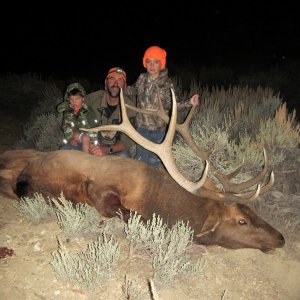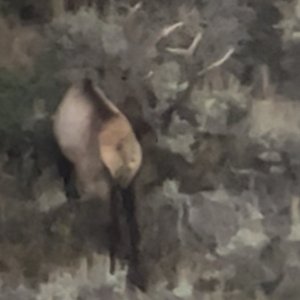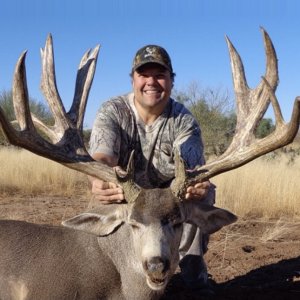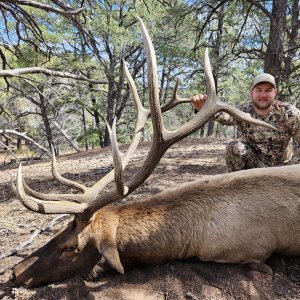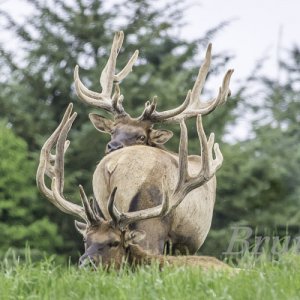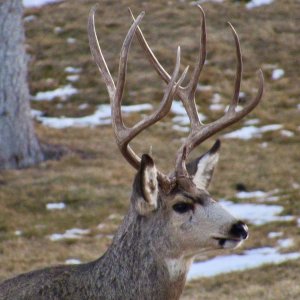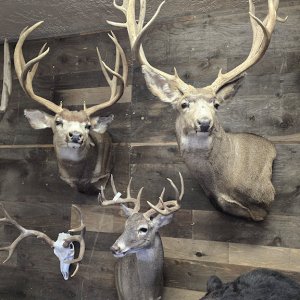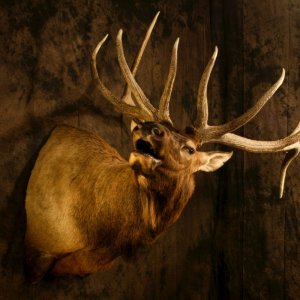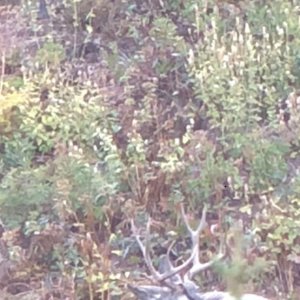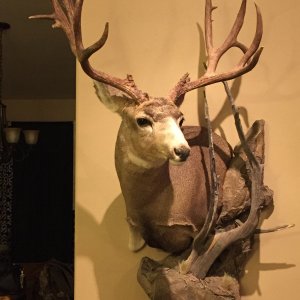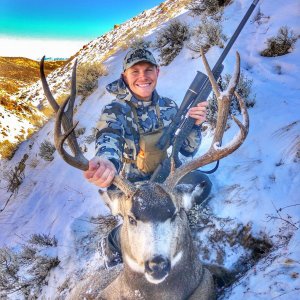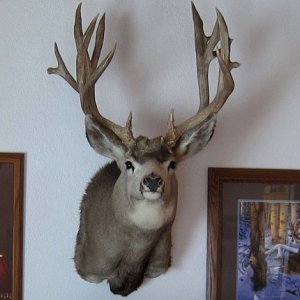UtahMountainMan
Active Member
- Messages
- 246
OK guys we only have about 9 or 10 weeks until archery season starts.
I have now been bowhunting for 7 years for deer and elk. I have killed 4 bucks, 3 small ones and one mature, and a few spikes and cows. I feel like I have a pretty good idea when/where/how to hunt elk as far as morning vs evening water.
I feel like I have wasted a lot of hunting days going after deer though. What I mean by that is, for instance, my first few years I found some gorgeous alpine meadows surrounded by timber. I would sit those in my tree stand morning and evening. I probably sat there for literally 14 to 20 days and never saw a buck. Did see a few does.
I would see little bucks while I was driving to the area to park.
I have found that it is very, very, very difficult to pattern mule deer bucks. At least where I hunt on the Manti unit in Utah it has been tough.
I have also learned that it is a complete waste of time sitting and waiting for a buck to walk within 50 yards UNLESS you are sitting on the right spot. But even then, mule deer roam and roam and I have found it difficult to find a buck that used the same routes.
So I am looking for opinions on your Morning vs Afternoon vs Evening approach to hunting bucks.
My rough plan this year is to be out on a glassing point in the dark and try to spot and stalk in the morning. I havent done much of this but I am excited to try. My CONCERN with this approach is that I am not hunting completely open sage country, there is a lot of timber and thick cover so I wont usually be able to see bucks bed down.
How do you guys get over this issue? Hunt a more open spot? Or get closer to the timber?
In the evening I will probably try to sit high up on the edge of timber ESPECIALLY if I saw a buck go in there to bed during the day. I am hoping to try to catch them up high feeding in the evening and not have to move much to get into a shot.
I actually enjoy hunting out of a treestand but I just dont feel like it gives me the best ODDS to hunt mule deer since they roam and dont follow travel corridors into a corn field like like whitetails do in the midwest.
My experience has been that tree stands dont give me the best odds of killing a mature mule deer.
Anyone else agree or disagree with that statement?
Lets hear your guys thoughts on my post, feedback, agree/disagree, and what your approach is out here in the Rocky Mountains to go after mature mule deer bucks.
"You sure you know how to skin grizz,
pilgrim?"
I have now been bowhunting for 7 years for deer and elk. I have killed 4 bucks, 3 small ones and one mature, and a few spikes and cows. I feel like I have a pretty good idea when/where/how to hunt elk as far as morning vs evening water.
I feel like I have wasted a lot of hunting days going after deer though. What I mean by that is, for instance, my first few years I found some gorgeous alpine meadows surrounded by timber. I would sit those in my tree stand morning and evening. I probably sat there for literally 14 to 20 days and never saw a buck. Did see a few does.
I would see little bucks while I was driving to the area to park.
I have found that it is very, very, very difficult to pattern mule deer bucks. At least where I hunt on the Manti unit in Utah it has been tough.
I have also learned that it is a complete waste of time sitting and waiting for a buck to walk within 50 yards UNLESS you are sitting on the right spot. But even then, mule deer roam and roam and I have found it difficult to find a buck that used the same routes.
So I am looking for opinions on your Morning vs Afternoon vs Evening approach to hunting bucks.
My rough plan this year is to be out on a glassing point in the dark and try to spot and stalk in the morning. I havent done much of this but I am excited to try. My CONCERN with this approach is that I am not hunting completely open sage country, there is a lot of timber and thick cover so I wont usually be able to see bucks bed down.
How do you guys get over this issue? Hunt a more open spot? Or get closer to the timber?
In the evening I will probably try to sit high up on the edge of timber ESPECIALLY if I saw a buck go in there to bed during the day. I am hoping to try to catch them up high feeding in the evening and not have to move much to get into a shot.
I actually enjoy hunting out of a treestand but I just dont feel like it gives me the best ODDS to hunt mule deer since they roam and dont follow travel corridors into a corn field like like whitetails do in the midwest.
My experience has been that tree stands dont give me the best odds of killing a mature mule deer.
Anyone else agree or disagree with that statement?
Lets hear your guys thoughts on my post, feedback, agree/disagree, and what your approach is out here in the Rocky Mountains to go after mature mule deer bucks.
"You sure you know how to skin grizz,
pilgrim?"

